As we’ve established, in early medieval England, everyday bread took two forms. For most people it was an unleavened round of bread, probably about the size of a hand, cooked on the hearth. For people wealthy enough to build an oven, it was a leavened round of bread, about the same size, like a dense modern bun. This was their everyday food, enjoyed with butter, cheese, or other toppings. (More on toppings in another post.)
And they ate a lot of it, as was true throughout history. As late as eighteenth-century America, the typical person ate a pound and a half of bread per day. The Bible says that “Man cannot live on bread alone,” but note that it means that people should also live on spiritual fare, not that meat and vegetables were required. For all intents and purposes, many families effectively did live on bread alone.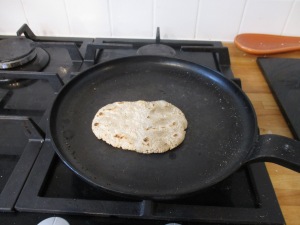
As bread was so vital to life, it is fitting that it occupied such a rich place in religious life as well. To early Christians and to the early English both, the bread of the Eucharist was a force in which God expressed himself to humans, a substance that literally embodied divinity.
To recap the history of Christian communion, Jesus established the tradition at the Last Supper, for example as recounted in Luke 22:19: “And he took bread, gave thanks, and broke it, and gave it to them, saying, ‘This my body given for you; do this in remembrance of me.'” 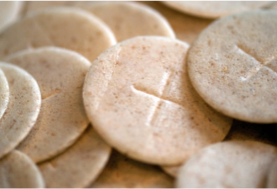
The meaning of the bread is also expressed in John 6:50-71: “This is the bread that comes down from heaven, so that one may eat of it and not die. I am the living bread that came down from heaven. If anyone eats of this bread, he will live forever. And the bread that I will give for the life of the world is my flesh.” The Jews then disputed among themselves, saying, “How can this man give us his flesh to eat?” So Jesus said to them, “Truly, truly, I say to you, unless you eat the flesh of the Son of Man and drink his blood, you have no life in you. Whoever feeds on my flesh and drinks my blood has eternal life, and I will raise him up on the last day.”
But as the institution of communion developed, the question arose: what kind of bread should be used? It seemed imperative to get this right.
The clearest decision was that the bread should be made of wheat. In numerous passages of the Bible, which explicitly or (according to medieval clerics) symbolically refer to Christ, he is compared to wheat. John 12: 23-25 says, “But Jesus answered them saying, ‘The hour is come that the Son of man should be glorified. Amen, amen, I say to you, unless the grain of wheat falling into the ground die, itself remaineth alone. But if it die it bringeth forth much fruit.” This and other passages assured that wheat should be the grain of communion bread, and it seemed appropriate that wheat was already the highest status grain.
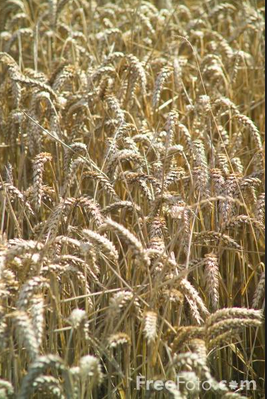
But should the communion bread be leavened or unleavened? Here Western Christendom and Eastern Christendom had decidedly different opinions.
The Western Church insisted that since the Eucharist arose from the Feast of Unleavened Bread, as reported in Matthew, Mark, and Luke, the host should be unleavened.
The Eastern Church argued that a) the Gospel of John described the Last Supper preceding the Feast of Unleavened Bread; b) that just as Christ rose, the bread used for the host should rise; and c) that leavening distinguished Christian (New Testament) practice from Jewish (superseded, Old Testament) practice. Unleavened bread was for Jewish Passover; the new religion must leaven!
No agreement was reached, and the disagreements came to a head in the Schism of 1054. The Western Church continues to use unleavened bread for the Eucharist. The Eastern Church largely still uses leavened.
And course arguments about the content of the host are still with us, as when recently the Pope declared that the host could not be gluten-free — which sounds overly pernickety, except that it holds by the same principles the Church has spent centuries determining. For Biblical and theological reasons, the host must be made exclusively of wheat and water, and no other substances. Gluten-free bread contains filler, and filler cannot be transubstantiated into Christ.
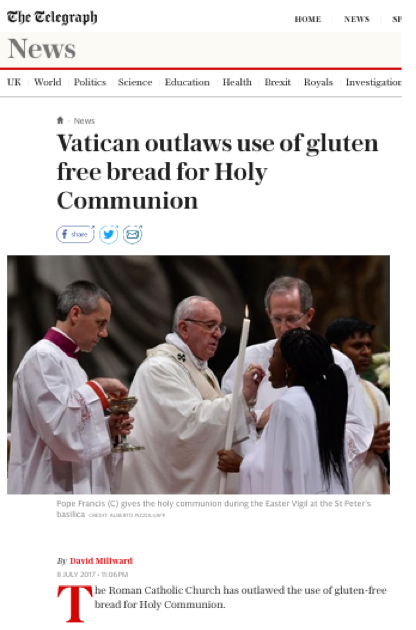
This means, incidentally, that people with celiac disease cannot become Catholic priests, because priests are required to take communion with hosts full of gluten. The decree thus has the peculiar side effect of classifying Christ as an allergen.
We can tell that even early in the medieval period, the host consisted of rounds of bread, rather than some other shape. This was witnessed by a report by Ivo of St Gall, who described the exhumation and translatio of the remains of St Omar, who had died in 759. The text reported:
under the head and around the breast of the man of God rounds of bread were discovered, which in the vulgar are called offerings, and these were found to be unharmed and free from all corruption by the bishop…*
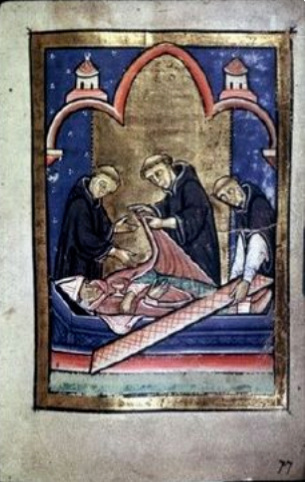
St Cuthbert was also buried with the communion host on his breast, here indicated by the chalice. British Library Yates Thompson 26.
In the eleventh century Bernold of Constance complained about the small size of these rounds of bread, saying that they
were reduced to the likeness of coins, and to a thinness and lightness entirely foreign to the appearance of real bread and hence he contemptuously calls them infinitesimal minted wafers, ascribing a fantastic and unreal smoothness to them, unworthy for their lightness of the name of bread.**
Their size can be seen in host presses, a device used to cook and imprint a design on the host in many areas, particularly in the mid and later Middle Ages.
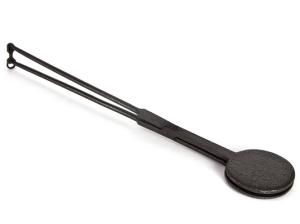
An 18th-century host press. The inner surface of the press typically has designs to be imprinted onto the host.
The modern equivalent (and descendant) of the host press is the waffle iron.
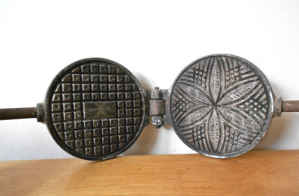
A waffle iron from 1910 — not all that different from the host press. Just add butter and milk to your host recipe, and voilà, a secular treat.
Although a communion wafer now looks very little like everyday bread, this was not the case at all in the medieval period. A communion wafer was just a miniature form of everyday bread, that is, rounds of unleavened bread. But the smallness of the communion wafer distinguished it from ordinary, non-godly bread. There is something about smallness that always attracts our attention and makes things seem more precious. 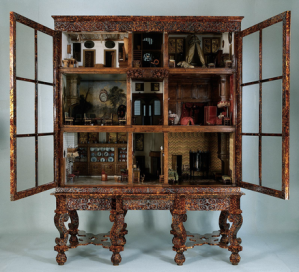
Think of dollhouses, or those ponies that stand three feet high, or the Thorne Miniature Rooms at the Art Institute in Chicago, or the miniature books at Indiana University. Communion wafers had this extra dimension. They were visibly extraordinary as well as theologically meaningful: concentrated and powerful, a kind of pharmacological life-giving bread.
Communion wafers, then, are a miniature, godly version of everyday medieval unleavened hearthcakes. The humble nature of their origins did not doom them to oblivion in wealthier times; instead they are a kind of medieval bread living on into the modern world.
* De miraculis S. Othmartis, in Monumenta Germaniae Historica, Scriptores vol. II, Scriptores rerum Sangallensium, ed. G. H. Pertz (Hannover, 1829), p. 49.
** Gerald Ellard, “Bread in the Form of a Penny,” Theological Studies 4 (1943): 319-46 at 343-44.
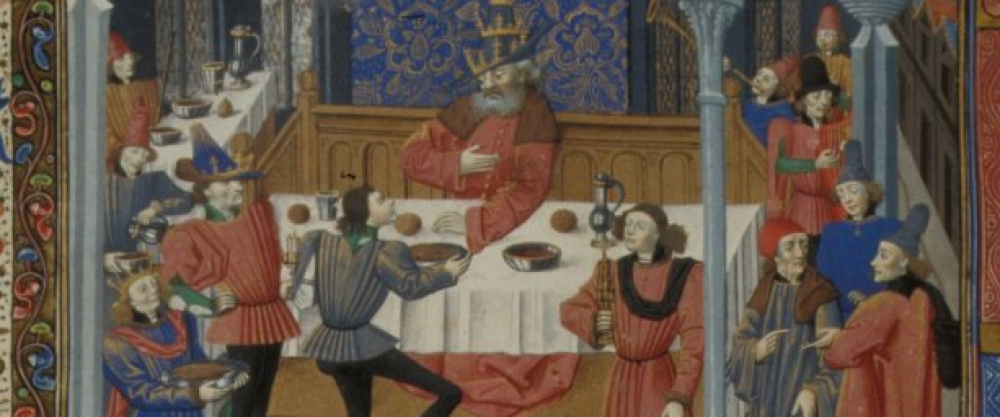
Great post! So won’t be converting to Catholicism any time soon. Do you know if wheat in the early medieval period was lower in gluten?
LikeLike
Did you ever get a response? While not specifically about gluten, I found this blog which hints at gluten in types of medieval wheat. The last paragraph is more telling. https://medievalyork.com/2015/05/28/all-about-medieval-english-grains/
LikeLiked by 1 person
Reblogged this on pmayhew53.
LikeLike